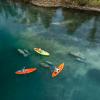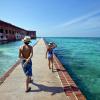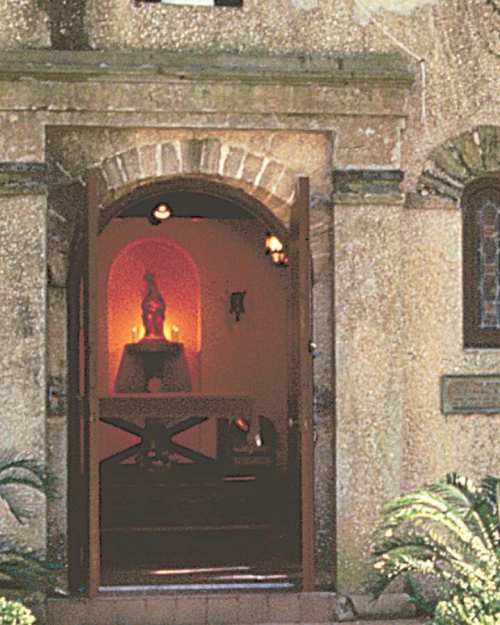Spanish Influence in Florida
From St. Augustine to Cape Canaveral to Key Largo, the state's Spanish heritage is evident.
By Jon Wilson
Five minutes max.
That's how long it takes motorists southbound on Interstate 95 to get the first hint that Florida is awash in Spanish heritage. Once across the Georgia border, visitors soon will spy signs to Fernandina Beach, a community on the Atlantic Ocean north-northeast of Jacksonville.
Fernandina, named for Spain's King Ferdinand VII in 1811, is one of many Florida places whose names are flavored with a Spanish accent.
And no wonder. Spain ruled Florida twice: from 1513 to 1763 and again from 1783 to 1821, when the Spanish gave Florida to the young United States.
Even our state's name came from an early Spanish explorer's first vision. Juan Ponce de Leon arrived near Florida's shore in April 1513, near Easter, and called the lush new land La Pascua de la Florida, translated often as "flowery passover," or "passion of the flowers."
Hundreds of Spanish – or Spanish-sounding – names sprinkle the Florida map, from high-profile tourist destinations such as St. Augustine to fanciful designations of subdivisions such as Del Tura, a retirement community near Fort Myers that translates literally to "of the structure."
St. Augustine, of course, was named in 1565 by its founder, conquistador Pedro Menendez de Aviles, for San Agustin, the Catholic Bishop of Hippo.
Both residents and visitors will learn much about the Spain-Florida relationship – not simply place-names, but shared history and culture – during the next two years. Viva Florida 500! celebrates our 500-year tie with Spain. To learn more about the quincentenary.
San Agustin is one of many places whose Spanish names became Anglicized as history unfolded. Among them: San Marcos de Apalachee became St. Marks in northwest Florida, for example. Others include San Jose to St. Joseph (now Port St. Joe); and Santa Maria to St. Marys (the river). Alachua County derives from La Chua, an early Spanish cattle ranch near Payne's Prairie.
Other places have retained their original Spanish names. Among them is Matanzas, the Spanish word for "slaughter"; today a national park commemorates Fort Matanzas, which guarded the south river approach to St. Augustine.
Two other St. Augustine spots are unchanged from the original Spanish: Castillo de San Marcos (Castle of St. Mark), and Nombre de Dios (Name of God, a mission.)
Florida Cities with Spanish Name:
- Largo – As in the city and the key, it means "large."
- Boca Raton – Often translated as "rat mouth," Boca Raton actually means "mouse mouth." The Spanish word for rat is "rata."
- Cape Canaveral – Named by Spanish explorers, Canaveral means "a place of reeds or cane."
- Naranja – The community near Miami means "orange."
- Ponte Vedra – The community in St. Johns County was named for a city in Spain.
- Punta Gorda – Spanish explorers may have named the big point of land extending into Charlotte Harbor. It means "fat point." But the city wasn't so named until 1887, well after Florida's Spanish eras.
- Valparaiso – The name of this city in Okaloosa County was borrowed from the city in Indiana, which in turn was named for the famous Chilean port. It means "valley of paradise."
- Islamorada – A village in the Florida Keys, its name means "purple island."
- Escambia – Both a river and a county, the word means "a method of barter."
- Pinellas – The county derives its name from the words Punta Pinal, meaning "point of pines."
- Alafia – The river's name possibly derives from the Spanish word meaning a species of dogbane known as oleander or periwinkle.
- Hernando, Leon, De Soto – These three counties were named for Spanish explorers.
- Key West – The westernmost island extending from the peninsula. Key West was originally called Bone Island – or Cayo Hueso – by Spanish explorers because they found large quantities of human bones there.
- Santa Fe – The river, college and community derive the name from a Franciscan mission named Santa Fe de Toloca once located near the river.
Finally, as an example of something named long after the colonial era, there is Lake Buena Vista, home to Walt Disney World Resort. The words mean "good view," and was taken from a street in Burbank, Calif., where Disney headquarters are located.
PLACES TO REMEMBER
RELATED CONTENT
40 Florida Songs To Add To Your Playlist for the Summer
- 4 minute read
By Sean Daly Our critic was looking not just for themes of sun, surf, sand, and skin, but also mood: mellow, romantic, sweaty and geography, from the...































